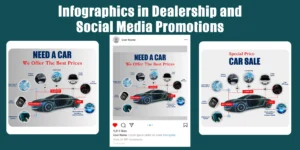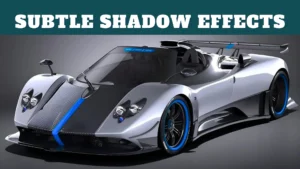Attention car enthusiasts and aspiring photographers! Get ready to dive into the world of used car photography. 📸 Whether you’re looking to sell your old ride or simply capture its beauty on camera, this introduction is here to help you master the art.
Used car photography is all about capturing the essence and uniqueness of each vehicle while showcasing its best features. From sleek sports cars to rugged off-roaders, every automobile has a story to tell, and it’s your job to bring it to life through your lens.
In this guide, we’ll explore tips and tricks for capturing stunning shots of used cars, from finding the perfect angle to highlighting its shiny exterior. So grab your camera, buckle up, and let’s embark on a thrilling journey into the world of used car photography! 🚗📸

Table of Contents
ToggleUsed Car Photography: Capturing Vehicles with Style and Flair
When it comes to selling a used car, presentation is key. And in the age of online car listings, one of the most important aspects of creating an enticing advertisement is high-quality photography. With the right techniques and equipment, you can make any used car shine and attract potential buyers.
In this article, we will explore the art of used car photography, from choosing the perfect location to editing your images. Whether you’re a professional dealer or a private seller, these tips and tricks will help you showcase your vehicle in the best possible light.
1. Equipment: The Tools of the Trade
Before you start snapping away, it’s important to ensure you have the right equipment for the job. While professional gear can yield the best results, you don’t necessarily need to break the bank. A good digital camera with manual settings and a decent lens will do the trick.
Additionally, a tripod is essential for achieving steady shots and minimizing camera shake. A polarizing filter can also come in handy to reduce glare and enhance the colors of the car.
It’s worth noting that smartphones have come a long way in terms of camera quality, so if you don’t have access to a dedicated camera, don’t fret. Many modern smartphones have impressive camera capabilities and even offer manual settings that allow you to control exposure and focus.
Regardless of the equipment you choose, it’s crucial to familiarize yourself with the settings and features to maximize the potential of your gear. Take the time to read the manual and experiment with different shooting modes and functions. Understanding your equipment will give you more control over the final outcome.
2. Location: Finding the Perfect Backdrop
Choosing the right location can make all the difference in your car photography. The background should complement the vehicle and create an appealing overall composition. Look for clean and uncluttered environments, such as a picturesque countryside road, an urban cityscape, or an empty parking lot.
Avoid distracting elements like trash cans, other cars, or signposts that can take away from the focus on the car itself. Pay attention to the lighting conditions as well. Early morning and late afternoon sessions often offer the most flattering natural light.
Keep in mind that direct sunlight can create harsh shadows and blow out highlights, so it’s best to shoot during the golden hours.
While shooting in an outdoor location is ideal, sometimes it’s necessary to work indoors due to weather conditions or logistical constraints. In these cases, choose a spacious setting with good lighting and a neutral background. A well-lit garage or a professional photo studio can be excellent alternatives.
3. Preparation: A Clean and Pristine Vehicle
Before you start photographing the car, make sure it is spotless. A dirty or dusty vehicle diminishes the appeal and gives the impression of neglect. Ensure that the car is washed, polished, and dusted inside and out. Pay attention to details such as the wheels, mirrors, and windows.
Clean the interior and remove any personal items to create a clean and neutral space. If necessary, consider using detailing products to enhance the shine of the car’s surfaces.
It’s also important to declutter the car before capturing it on camera. Remove any items from the seats, dashboard, and trunk that could distract from the main focus. The goal is to create a blank canvas that allows potential buyers to imagine themselves in the vehicle.
Organize the elements in a visually appealing manner, such as aligning the steering wheel, adjusting the seats, and folding down the rear seats to create a spacious look.
Lastly, consider the weather and time of day when planning your photoshoot. Overcast skies can provide soft and even lighting, while sunny days lend themselves to vibrant colors and sharp contrasts. Choose a time when the lighting conditions align with the mood you want to convey in your photographs.
4. Lighting: Harnessing Natural and Artificial Light
Lighting is one of the most critical factors in photography, and used car photography is no exception. While natural light can create stunning results, additional artificial lighting can help fill in shadows and illuminate specific areas of the car.
When shooting outdoors, the golden hours of sunrise and sunset create a warm and flattering light that enhances the car’s features and colors. Position the car’s front or rear toward the light source to showcase its contours and give it a three-dimensional feel. Experiment with different angles to find the most flattering lighting conditions.
If shooting indoors, you’ll need to rely on artificial lighting. Continuous lighting or strobes can provide consistent and even illumination. Position the lights to the sides or behind the car to create a sense of depth and highlight its shape. Use reflectors to bounce the light and fill in shadows, creating a well-balanced image.
5. Composition: Framing the Vehicle
Composition plays a crucial role in creating visually pleasing photographs. When photographing a used car, it’s important to pay attention to the angles and framing to highlight its best features.
Start by choosing the right perspective. For exterior shots, position yourself at eye level with the car or slightly lower to avoid any distortion and provide a natural view. Experiment with different angles and distances to find the most flattering composition.
When capturing the interior, focus on showcasing space and functionality. Wide-angle lenses can help emphasize the interior’s size and open up the cabin. Keep the camera level to avoid any distortion and ensure straight lines.
For a dynamic shot, consider using leading lines or reflections to guide the viewer’s eye toward the car. Experiment with reflections on the car’s surface, such as capturing the skyline or trees in the rear window, to add an extra layer of interest.
6. Details: Highlighting Unique Features
While capturing the overall vehicle is important, don’t forget to pay attention to the details. Unique features, such as a luxurious interior, a pristine engine, or a special trim, can set your car apart from the competition.
Zoom in and focus on specific elements, capturing them in detail. Use macro mode or a close-up lens to highlight textures, badge logos, or intricate stitching. These close-up shots can add depth to your ad and give potential buyers a better understanding of what sets your car apart.
Remember to keep the context in mind while photographing details. For example, capture the steering wheel in the context of a well-maintained dashboard to give potential buyers a sense of what it’s like to be behind the wheel.
7. Editing: Enhancing Your Images
After the photoshoot, the next step is to enhance and edit your images to make them pop. Editing can correct minor flaws and help draw attention to the car’s best features.
Start by adjusting the exposure, contrast, and saturation to ensure a balanced and vibrant image. Correct any lens distortion or perspective issues that may have occurred during the shooting process. Crop and straighten the image if necessary to improve the composition.
Pay attention to any distracting elements or imperfections in the image. Remove dust spots, reflections, or unwanted shadows using spot-healing tools or clone stamp tools. Be careful not to over-edit the image, as it can lead to an unrealistic representation of the car.
Lastly, resize and save the image in the appropriate format for online platforms or print advertisements. Be mindful of the resolution and file size to ensure fast loading times and optimal quality.
Key Takeaways for “Used Car Photography”
- Good lighting is essential for capturing appealing photos of used cars.
- Clean the car thoroughly before taking any photos to make it more attractive.
- Take shots from different angles to showcase the car’s features and condition.
- Use a high-quality camera or smartphone with good resolution for better image quality.
- Edit and enhance the photos using editing software to make them look professional.
Frequently Asked Questions
Are you curious about how to capture stunning photographs of used cars? Check out these common questions and answers related to used car photography.
1. What equipment do I need for used car photography?
To capture high-quality photos of used cars, you’ll need a digital camera with at least 12 megapixels and a wide-angle lens. A tripod is also essential to keep your shots steady and avoid blur. Additionally, using a polarizing filter can help reduce reflections and enhance color saturation in your images.
Investing in external lighting, such as a speedlight or studio strobes, can significantly improve the lighting conditions during the shoot. Finally, having a variety of cleaning supplies, such as microfiber cloths and detailing products, will ensure the cars look their best in the photos.
2. How can I find the best angles for used car photography?
Experimenting with different angles is key to finding the most flattering shots of used cars. Start by photographing the car from a 45-degree angle, as this helps showcase its shape and lines. Capturing the front, back, and sides of the car from different angles will provide a comprehensive view.
Remember to get down low to capture shots that highlight the car’s details, such as the wheels or exhaust pipes. Don’t forget to include interior shots to give potential buyers a complete picture of the vehicle. Remember, practice makes perfect, so don’t be afraid to try out different angles and compositions to find your unique style.
3. How can I make the car shine in my photos?
To make a used car shine in your photos, it’s essential to properly clean and prep the vehicle beforehand. Start by thoroughly washing and detailing the car to remove any dirt, dust, or grime. This will help bring out the car’s natural shine.
Next, apply a layer of car wax or a quick detailer to add an extra shine to the paint. Additionally, make sure the car’s windows, headlights, and mirrors are clean and streak-free. Lastly, pay attention to the lighting during the shoot, as well-lit areas will naturally make the car appear brighter and more vibrant in the photos.
4. What are some tips for editing used car photos?
When it comes to editing used car photos, less is often more. Start by adjusting the exposure, contrast, and white balance to enhance the overall look of the image. Use cropping and straightening tools to improve composition and eliminate any distractions.
Removing minor imperfections, such as scratches or dust, can be done using the spot healing brush. However, be cautious not to overdo the editing, as it can make the photos look unrealistic.
Finally, make sure to save your edited photos in a high-resolution format to preserve the quality and ensure they look their best when viewed online or in print.
5. How can I make my used car photos stand out online?
There are a few ways to make your used car photos stand out online. First, ensure you are photographing the car in an appealing location with a clean and uncluttered background. This will help the car take center stage in the photos.
Consider using different angles and creative compositions to make your photos more visually interesting. Adding a touch of creativity in the form of unique perspectives or incorporating reflections can help grab the viewer’s attention. Finally, make sure your photos are properly optimized for online platforms by resizing them and reducing file sizes without compromising image quality.
5 Tips to Photograph a Used Car for Sale
Summary
Taking good photos of a used car is important for selling it quickly and at a good price. Here are some key points to remember:
First, clean the car inside and out to make it look its best. Then, find a location with good lighting and a neutral background. Use a decent camera or smartphone and take lots of clear, well-framed photos. Finally, be honest in your listing by including any flaws or issues. Good photos will help your car stand out and attract potential buyers!
Remember, it’s important to showcase your car in the best possible light. By following these tips and taking eye-catching photos, you’ll increase your chances of selling your used car quickly and getting a great price. So grab your camera and start snapping those pictures!










